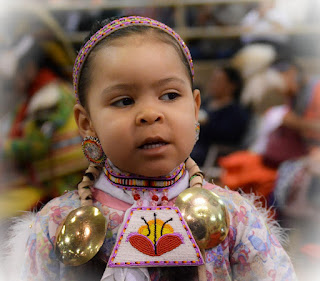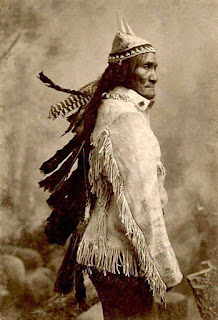How is the Apache Indian nation organized?
The different Apache tribes in the United States, today lives on its own reservation. Reservations are lands that belong to Indian tribes and are under their control. The Oklahoma Apaches live on trust land. Each Apache tribe has its own government, laws, police, and services, just like a small country. However, the Apaches are also US citizens and must ...obey American law.
In the past, each Apache band was led by its own chief, who was chosen by a tribal council. Most important decisions were made by the council, and all the Apache councilmembers had to agree before an action could be taken. An Apache chief was more like a tribal chairman than a president. Most of his job was mediating between other Apaches. Most Apache tribes still use tribal councils for their government today.
Contemporary Apache groups
Apachean tribes ca. 18th century: WA – Western Apache, N – Navajo, Ch – Chiricahua, M – Mescalero, J – Jicarilla, L – Lipan, Pl – Plains Apache
The following Apache tribes are federally recognized:
Apache Tribe of Oklahoma
Fort McDowell Yavapai Nation, Arizona
Fort Sill Apache Tribe of Oklahoma
Jicarilla Apache Nation, New Mexico
Mescalero Apache Tribe of the Mescalero Reservation, New Mexico
San Carlos Apache Tribe of the San Carlos Reservation, Arizona[4]
Tonto Apache Tribe of Arizona
White Mountain Apache Tribe of the Fort Apache Reservation, Arizona
Yavapai-Apache Nation of the Camp Verde Indian Reservation, Arizona
Jicarilla are headquartered in Dulce, New Mexico while the Mescalero are headquartered in Mescalero, New Mexico. The Western Apache, located in Arizona, is divided into several reservations, which crosscut cultural divisions. The Western Apache reservations include the Fort Apache Indian Reservation, San Carlos Apache Indian Reservation, Yavapai-Apache Nation, Tonto-Apache Reservation, and Fort McDowell Yavapai Nation.
Young Jicarilla Apache boy, New Mexico, 2009
Present-day primary locations of Apachean peoples
The Chiricahua were divided into two groups after they were released from being prisoners of war. The majority moved to the Mescalero Reservation and form, with the larger Mescalero political group, the Mescalero Apache Tribe of the Mescalero Apache Reservation, along with the Lipan Apache. The other Chiricahua are enrolled in the Fort Sill Apache Tribe of Oklahoma, headquartered in Apache, Oklahoma.
The Plains Apache are located in Oklahoma, headquartered around Anadarko and are federally recognized as the Apache Tribe of Oklahoma.
The different Apache tribes in the United States, today lives on its own reservation. Reservations are lands that belong to Indian tribes and are under their control. The Oklahoma Apaches live on trust land. Each Apache tribe has its own government, laws, police, and services, just like a small country. However, the Apaches are also US citizens and must ...obey American law.
In the past, each Apache band was led by its own chief, who was chosen by a tribal council. Most important decisions were made by the council, and all the Apache councilmembers had to agree before an action could be taken. An Apache chief was more like a tribal chairman than a president. Most of his job was mediating between other Apaches. Most Apache tribes still use tribal councils for their government today.
Contemporary Apache groups
Apachean tribes ca. 18th century: WA – Western Apache, N – Navajo, Ch – Chiricahua, M – Mescalero, J – Jicarilla, L – Lipan, Pl – Plains Apache
The following Apache tribes are federally recognized:
Apache Tribe of Oklahoma
Fort McDowell Yavapai Nation, Arizona
Fort Sill Apache Tribe of Oklahoma
Jicarilla Apache Nation, New Mexico
Mescalero Apache Tribe of the Mescalero Reservation, New Mexico
San Carlos Apache Tribe of the San Carlos Reservation, Arizona[4]
Tonto Apache Tribe of Arizona
White Mountain Apache Tribe of the Fort Apache Reservation, Arizona
Yavapai-Apache Nation of the Camp Verde Indian Reservation, Arizona
Jicarilla are headquartered in Dulce, New Mexico while the Mescalero are headquartered in Mescalero, New Mexico. The Western Apache, located in Arizona, is divided into several reservations, which crosscut cultural divisions. The Western Apache reservations include the Fort Apache Indian Reservation, San Carlos Apache Indian Reservation, Yavapai-Apache Nation, Tonto-Apache Reservation, and Fort McDowell Yavapai Nation.
Young Jicarilla Apache boy, New Mexico, 2009
Present-day primary locations of Apachean peoples
The Chiricahua were divided into two groups after they were released from being prisoners of war. The majority moved to the Mescalero Reservation and form, with the larger Mescalero political group, the Mescalero Apache Tribe of the Mescalero Apache Reservation, along with the Lipan Apache. The other Chiricahua are enrolled in the Fort Sill Apache Tribe of Oklahoma, headquartered in Apache, Oklahoma.
The Plains Apache are located in Oklahoma, headquartered around Anadarko and are federally recognized as the Apache Tribe of Oklahoma.
Tweets from https://twitter.com/UnifiKshuNaShun/lists/tweets-for-blogs




